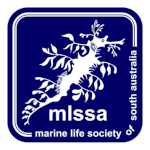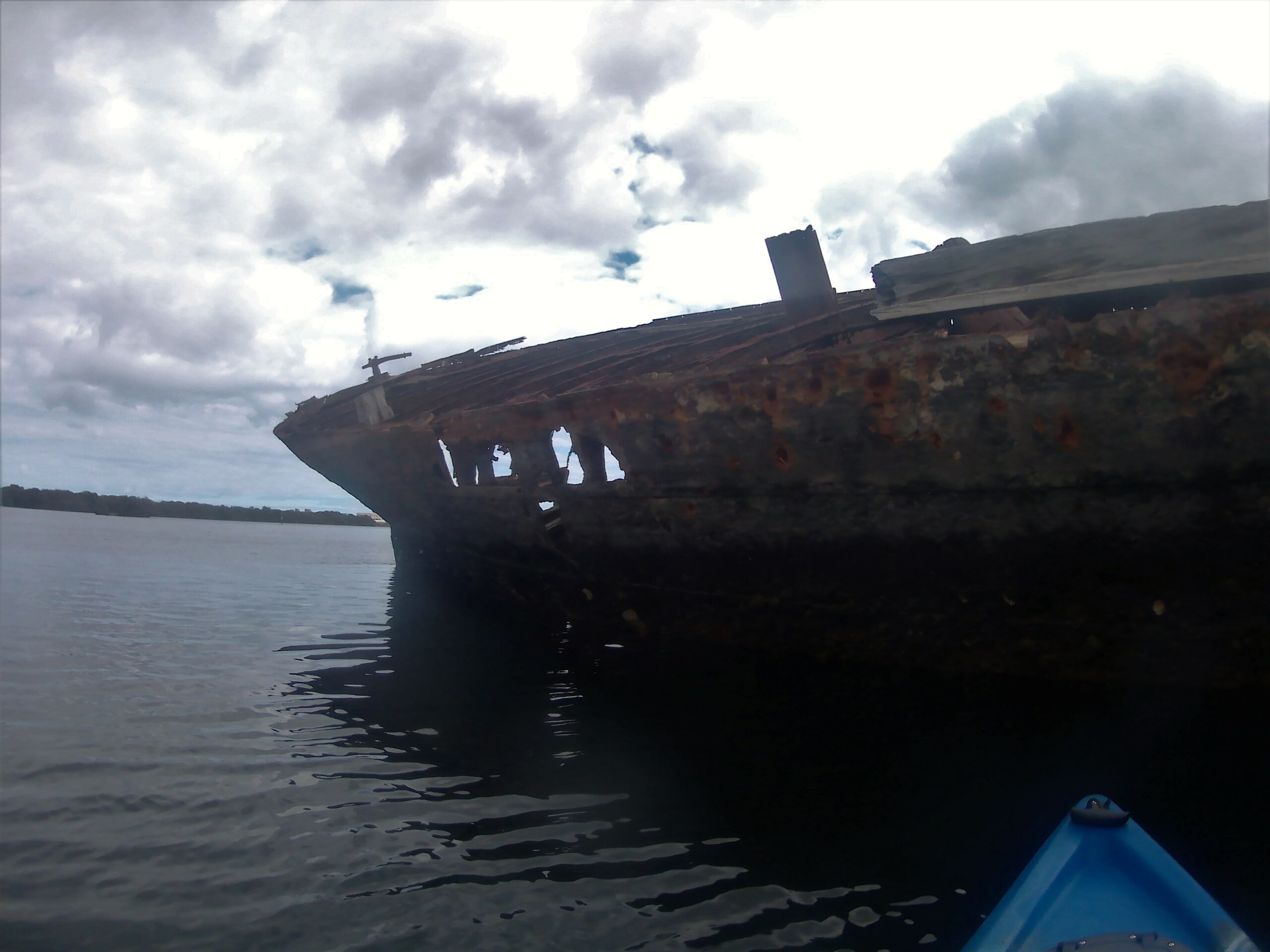What connections are there between the wreck of the Santiago in the North Arm of the Port River and the Willyama wreck at Marion Bay?
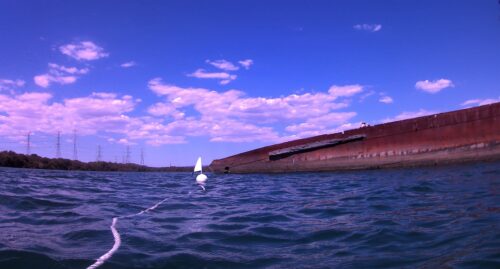
Since writing Update of the Rusting Wreck of the Santiago recently, and after reading “Garden Island Ships’ Graveyard” again, I asked Nathan Richards for his help. “Garden Island Ships’ Graveyard” states that “(Santiago) assisted … salvage of …. Willyama at Port Lincoln in 1909″. Something about this statement didn’t seem right to me since the Willyama sank at Marion Bay in 1907.

Nathan told me that he gathered that the 1909 date given in Garden Island Ships’ Graveyard” is an error. After a little searching, he was able to inform me, “According to The Register, 15 April 1907, page 5. Santiago (was) sent as lighter (to Port Lincoln).”
Further, “According to The West Australian – 20 April 1907 page 12, both Santiago and Uribes were used to support work of divers”. Nathan added, “Falcon towed Santiago and Uribes to the wreck site and divers attempted to patch the hull of Willyama — (I) guess they were unsuccessful”.
So, it seems that the Willyama had sprung a leak in its hull at Port Lincoln in April 1907. In 1901, the Adelaide Steam Tug Company had converted the newly owned three-masted barque Santiago to a hulk which was also “employed in lightering work”.
As a lighter, the Santiago sometimes “assisted with the salvage of stranded vessels”. The Willyama was one of those vessels that the Santiago assisted.
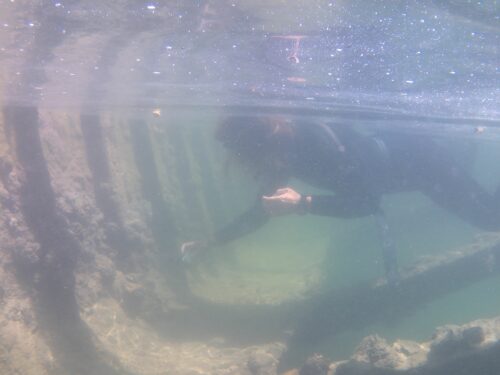
In doing my own research on the Santiago, I found that the South Australian Archaeology Society (as the Society for Underwater Historical Research) had done some work on the Santiago in 1978. Bill Jeffery reported on the work in the SUHR Annual Report for 1978 (‘Project: Santiago‘, pages 8-9).
Bill was the Project Leader for the SUHR’s Santiago project. His two-page report in the 1978 Annual Report explained, “The project of recording the historic vessel Santiago was brought about so as to document the remaining evidence of the barque and to allow Society members to record a vessel above water level.”
Further, “Since February there have been three visits by Society members to record the vessel’s details. …. Information gained on these visits has allowed a plan of the ship’s outline and part of an elevation to be drawn up. While diving on the starboard side of the Santiago the masts were located and measured. The masts look to have been cut off and allowed to fall overboard. The remains of the three masts, sampson posts, bollards and parts of the rudder controls are some of the detail remaining in position on the hull.
“No items have been salvaged from the vessel although any items of special interest that are found will be properly preserved if salvaged. A photographic record is being compiled on all aspects of the Society’s work and this includes details on the Santiago which may or can not be measured.”
The report gives two references, a little background on the vessel, some details about it and a list of the original owners of the vessel.
Just repeating some of those details: –
“The Santiago was built in Methil, Scotland, by Leben & Co.* in 1856. The British Customs House official number for her was 15391, registered on the 19th June, 1856 (167/56).”
* (According to “Garden Island Ships’ Graveyard”, the Santiago was built by Henry Balfour & Co. in Methil, Scotland for S.Williamson and Company.)
“The Santiago was re-registered in 1873 (141/73) due to alterations in her tonnage, of which we do not have further details. The details have come from the Lloyds Register in London and were obtained by Bob Sexton.”
“Her details are as follows:
454.14 tons (455 gross tons according to “Garden Island Ships’ Graveyard”)
2 decks, 3 Masted Barque, Round Stern, Clinch built, no gallery, Scroll Head, Iron Framework
Length: 167 feet (160.6 feet (49m) according to “Garden Island Ships’ Graveyard”)
Beam: 26.5 feet (25.9 feet (7.9m) according to “Garden Island Ships’ Graveyard”)
Draught: 17.4 feet” (17.4 feet (5.3m) according to “Garden Island Ships’ Graveyard”)
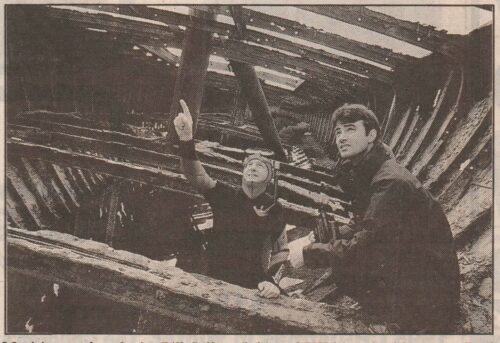
As reported in The Rusting Wreck of the Santiago , “Maritime experts visited the Santiago wreck in the Garden Island Ships’ Graveyard in 1995 (the 50th anniversary of the vessel being abandoned there in 1945). They included SA maritime archaeologist, Bill Jeffery, Peter Kentish, and Christine Watson & Paul Bedwell from the UK. Paul was a member of the UK’s National Historic Ship Committee at the time. They were attempting to preserve the vessel from corrosion. Sacrificial anodes were fixed to the vessel below the waterline and a rust-inhibiting, protective paint was applied to the upper part of the hull to test the results.”
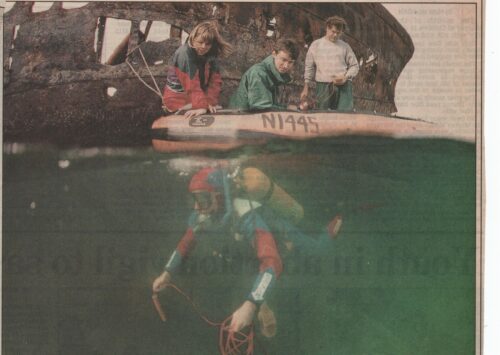
I have now found this photograph of a diver inside the hulk of the Santiago: –
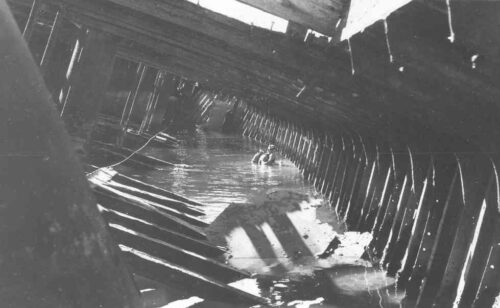
Photograph: Diver inside the hulk of the Santiago (circa 1974-1979, photographer unknown)
(Source: SUHR Publications (google.com) )
